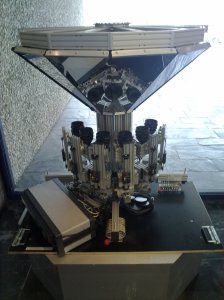OmniCam Demo in Berlin
I was at a symposium at the Fraunhofer Heinrich Hertz Institute in Berlin, where new prototypes in 3DTV and 180 degree shooting and projection were the main focus. There is no doubt that 3D cinema and television will become the standard eventually- right now it’s just a matter of bringing production costs down (the camera department on “Step Up 3D”, for example, had a price tag of $2 million). Wim Wenders, who was present at the Institute for the official unveiling of the panoramic cinema, will be the first to tackle 3D in a narrative drama.
3DTV in particular amazes me because it offers an experience so reminiscent of the physical world that 2D quickly seems merely representational in comparison. I say “3DTV in particular” because I feel that the technology is not intended to shock and impress us as much as the theatrical 3D films have been designed to do. I was surprised at how unostentatious the use of 3D feels in the context of regular programming (car races, a medical show, a crime drama, etc.). It sounds obvious but there’s no other way to put it: 3D just feels natural.
The 180 degree high-resolution digital theater was also incredible. The possibilities for both narrative and documentary filmmaking are exciting, but again, far too expensive for now. “Tomorrow’s Cinema” is a theater with a high-resolution digital 180-degree panoramic projection by Kinoton, and an IOSONO 3D sound system by IDMT (your experience of the sound mix differs depending on where you are in the theater). I love the idea of shooting with a 180 degree frame; it opens up more possibilities for concept-driven blocking and gives some freedom back to the audience to choose which part of a scene they are interested in observing. It’s also a much more active way of watching a scene unfold, as you need to physical turn your head to take it all in and catch something you might otherwise miss. Like 3D, this, too, is providing an experience a little truer to life than traditional projection. I think an interesting evolution in visual storytelling will come out of 180 degree shooting if it ever gets the chance.
The camera system, called the OmniCam, consists of six lenses and CMOS sensors, each sending data to a device that “stitches” the images together for monitoring. The seamless assembly is later finessed via the Kinoton’s seven projectors. Apparently there are talks with ARRI regarding the further development of this camera system.
